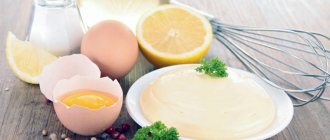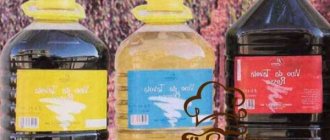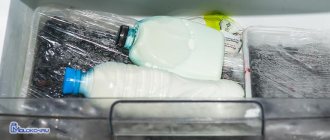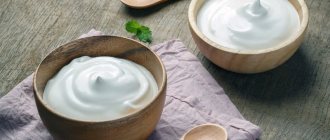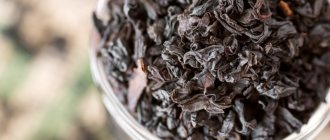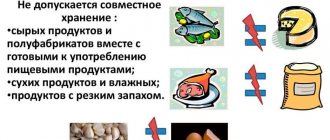According to GOST
A number of standards have been adopted at the state level regulating the quality and shelf life of the product:
- GOST 33222-2015 “White sugar. Technical Specifications" contains requirements for organoleptic properties, raw materials, packaging, and labeling.
- GOST 21-94 “Granulated sugar” has become invalid.
- GOST 26907-86 “Sugar. Long-term storage conditions” lists what requirements are imposed on the environment to preserve the quality of the product.
- GOST R 54902-2012 “Raw cane sugar molasses. Technical Specifications" contains information on what type of cane product should be.
Expiry date of sugar
Crystalline white sugar is of cane origin - SC; beet product - SV - is more common. Quality is regulated by GOST 33222-2015. It also specifies organoleptic characteristics, requirements for packaging, labeling, and storage duration. The maximum shelf life of sand and refined sugar is 8 years. Should be stored in heated warehouses. When using cold rooms, a maximum of 4-5 years.
How long to store other types of sugar:
- 24 months maple agorn;
- 12 months vanilla;
- 24 months sorghum;
- 18 months grape.
Do you maintain the storage temperature for sugar?
Not really
Sweeteners can be of natural or synthetic origin. Storage periods are determined by manufacturers. Often do not exceed 24 months. It is longer and easier to store synthetic products.
According to GOST, sugar should be stored for no more than 8 years. The duration of storage is affected by the type, conditions, and temperature. Maximum air humidity 75%. We recommend storing at a temperature of +11-22 degrees.
Marking
The marking is applied to the packaging and contains:
Free HOTLINE:
Moscow time 8 (499) 938 6124
St. Petersburg 8 (812) 425 6761
Fed 8 (800) 350 8362
- Name;
- manufacturer;
- country of origin;
- weight;
- the nutritional value;
- the regulatory act in accordance with which it was manufactured;
- raw materials: SV - beet, SC - cane;
- date of manufacture.
Is he there?
Although the product is not a perishable product, sugar still has an expiration date. Moreover, this period is directly indicated by the state standard.
Subject to strict environmental parameters, it lasts up to 8 years. If in winter it is stored in an unheated room, then it is significantly reduced: a maximum of 5 years for refined sugar, up to 4 years for sand, 2 years without containers.
The raw materials from which the product is made are not decisive. The active ingredient that imparts sweetness in all varieties is sucrose, so the period of preservation of the properties is identical.
Storage conditions, containers, and environmental parameters come to the fore. It will depend on them whether the sand will retain its properties until the end of its shelf life.
Product shelf life according to GOST
The shelf life of this product is established by Section 1 of Interstate GOST 26907-86 (hereinafter referred to as GOST No. 2, Standard No. 2).
In clause 1.1. it is said that long storage periods are established for both sand and refined sugar.
The specific shelf life depends on the type of product and the presence (absence) of packaging. All necessary information is given in the table.
| Availability/absence of packaging | Product variety | Where is it stored? | Regulated shelf life |
| Eat | Sand | Warehouse (hereinafter also referred to as storage) with heating | Up to 8 years |
| Sand | Warehouse without heating | From one and a half to 4 years - depends on the type of container and climatic parameters | |
| Refined sugar | Heated storage | Up to 8 years | |
| Refined sugar | Warehouse without heating | Up to 5 years | |
| No | Both sand and refined sugar | In silos | No more than 2 years |
Attention!
P. 1.4. GOST No. 2 states that the above periods are valid if the temperature of sugar during long-term storage does not exceed 25 degrees Celsius. In summer, it is allowed to deviate from this norm. GOST 26907-86 “Sugar. Long-term storage conditions"
Timing and types
| Variety | Shelf life (years) | ||||
| Glass | Plastic | Metal | Bag | Stick | |
| Crystal | 4-8 | 4-8 | — | 4-8 | 4 |
| Refined sugar | 8 | 8 | — | 8 | — |
| Vanilla | 1 | 1 | — | 1 | 4 |
| Reed | 8 | 8 | — | 8 | 4 |
| Brown | 8 | 8 | — | 8 | 4 |
There are many varieties, the basis of division is the raw material or form.
Crystalline (granular) – these are crystals of different fractions. They are used for baking, decorating confectionery products, and are made from cane or beets.
Refined sugar is a product that has undergone additional purification and is close to pure sucrose. This simultaneously sharpens the sense of taste and is harmful to health, as it causes too sharp a spike in insulin. It is usually shaped into cubes.
Vanilla, in addition to sweetness, gives baked goods a pleasant aroma. Made from sugar and powder of the same name. Vanillin is an artificial substitute for natural vanilla, which can cause an allergic reaction and harm health. Therefore, it is recommended to use a natural analogue by adding it to confectionery products.
Reed is considered the most useful. It is obtained from sugar cane juice. The special color and properties depend on the remaining molasses substance. Contains a range of useful elements and vitamins. Due to the complexity of manufacturing, it costs much more than usual.
Brown is most often produced from cane, since unrefined beetroot has an unpresentable appearance, smell, and taste. Therefore, the brown sugar on store shelves is unprocessed cane sugar.
If you compare the properties of the regular and brown varieties, you can see that they are almost the same in terms of calorie content. They differ only in the content of vitamins, microelements, and the degree of processing. From this point of view, reed wins, but its price is several times higher than the cost of white.
Sugar retains its properties for several years and even after this time remains sweet. The only thing that can happen is clumping, impregnation with unpleasant odors from the surrounding air, and the acquisition of an unusual taste.
Storing granulated sugar
DESCRIPTION OF THE PRODUCTION HARDWARE AND TECHNOLOGICAL SCHEME Read more: Preparation for the production of pressed yeast
2.1.5 Storage of granulated sugar
Granulated sugar is supplied to the enterprise in fabric bags for sugar in accordance with GOST 8516-78E, or in fabric bags with polyethylene or paper three-layer liners with a net weight of 50 kg. The bags should not contaminate the sugar with firewood or lint or have foreign odors; sugar should not spill through the fabric or seams.
Bags of sugar are placed on pallets covered with clean tarpaulin, burlap or paper. The stacks are made up of sugar of uniform quality, packed in one type of container and having the same standard weight. Packaged granulated sugar should be stored at a temperature not exceeding 40 0C and a relative air humidity not exceeding 70% at the surface level of the bottom row of packaged sugar [10, p. 30].
2.1.6 Storage of sunflower oil
Refined sunflower oil is delivered to the enterprise in steel barrels in accordance with GOST 13950-84, then pumped into XE-44 containers (11) and stored in bulk in closed, dark rooms at a temperature of 19 2 0C [10, p. 36].
2.1.7 Storage of table margarine
Margarine arrives at the enterprise in corrugated cardboard boxes in accordance with GOST 13511-84 or in cardboard boxes in accordance with GOST 13515-80, lined with polymer films. Stored in refrigerators at temperatures from minus 20 0C to plus 15 0C with constant air circulation [10, p. 39].
2.2 Preparation of raw materials for production
Preparation of raw materials for production must be carried out in accordance with the relevant section of the “Collection of technological instructions for the production of bread and bakery products”, 1989, “Instructions for preventing the ingress of foreign objects into bakery products and SanPiN 2.3.4.545-96. Preparation of raw materials for production is carried out after preliminary cleaning of the container from surface contaminants.
2.2.1 Preparation for the production of baking flour
When processing flour that comes in containers (in bags), before emptying, the bag of flour is cleaned with a brush and steamed along the seam, then the bag of flour is loaded onto the Beta bag dumper. Before entering production, flour is sifted, cleared of metal-magnetic impurities and weighed on automatic scales 6.041-AV-50NK. To sift flour, a PSP 1500 sifter is used, the main working part of which is wire sieves No. 2.8-3.5 (GOST 3924-74). The number of the sieve used for sifting flour must correspond to the type of flour.
To remove metal particles from flour that pass through the holes of the sifter, magnetic catchers are provided. They consist of a set of steel magnetic arcs with a strip cross-section of 48 12mm. For magnets of this cross-section, the minimum load capacity is 8 kg, the maximum is 12. Weighing the flour is carried out after sifting, since the design features of the weighing devices used make it possible to ensure the stability of their operation only on sifted flour.
To ensure the specified productivity, an intermediate (overhead) hopper is installed between the PSP 1500 sifter and the 6.041-AV-50NK scales, which must contain a stock of flour not less than the established maximum dose. For the same purpose, a storage container is installed under the scales for a measured dose of flour, the so-called hanging hopper with a capacity sufficient to ensure continuous operation of both the weighing device and the system supplying flour to production. The design of the weighing dispenser has a weight counter, which is used to keep track of the flour dispensed.
After sifting and weighing, the flour is sent to production bunkers BN-2 to create operational reserves. From the bunkers it is supplied to the EDSP-100 bulk component dispensers installed at the Prima-300 dough mixing machine. Flour is transported mechanically using elevators and augers [10, p. 69].
2.2.2 Preparation for water production
Water is tempered to the desired temperature before use.
The temperature is approximately determined by calculation, and then refined experimentally (trial). The water temperature should not be higher than 45 - 50ºC.
where is the initial temperature of the dough, °C;
– flour temperature, °C;
– mass of flour in the dough, kg;
– specific heat capacity of flour, 0.48 Kcal/(kg*deg);
– amount of water for kneading dough, liter.
2.2.3 Preparation for the production of table salt
Salt is delivered to the enterprise in bulk, in bags. Before being supplied to production, the salt is dissolved in a periodic salt solvent KhSR-3-0.6R, filtered and sent to a supply container. The density of the saline solution should be 1.2 kg/l. To ensure correct dosage of salt, it is recommended to use solutions with a constant density. The finished salt solution from the salt solvent is pumped into the production supply tank R3-KhChD-3, and from there it is supplied to the liquid component dispenser Sh2-KhD-2B.
Salt consumption rates provide a dose of pure salt based on dry matter. The difference formed between the consumption of pure salt according to the recipe and that received by the enterprise (usually contaminated) should not exceed the amount of foreign impurities specified in the certificate (moisture, insoluble sediment, foreign inclusions, etc.) [10, p. 72].
DESCRIPTION OF THE PRODUCTION HARDWARE AND TECHNOLOGICAL SCHEME Read more: Preparation for the production of pressed yeast
Information about the work “Organization of production of bakery products”
Section: Industry, production Number of characters with spaces: 62469 Number of tables: 0 Number of images: 0
Similar works
Study of consumer properties and nutritional value of bakery products
72325
4
0
... showing the benefits of using a specific product and aimed at the consumer. As a rule, this is information about the most attractive consumer properties of goods. For bakery products, these are: nutritional value, composition, functional purpose, etc. Colorful images on the packaging or label are intended to enhance the emotional perception of information by the consumer. Are common …
Bakery production line project
105607
21
5
... be carried out through an emergency exit located 5 meters from the doors of the room. 5 Economic part 5.1 Marketing research of scientific and technical products In this graduation project, a line for the production of bakery products is being developed for a small business. The advantages of this line include: the creation of this production will provide the population of the region ...
Planning of technical and economic indicators in the production of bakery products on a line with leading equipment - the FTP-2-60 oven
23128
14
0
... production and economic activities of the enterprise. An important indicator of the plan, which allows us to determine the total volume of production, its structure, growth rates, labor productivity and other economic indicators, is commercial output. To justify the production program of an enterprise, it is necessary to have calculations of production capacity. The production program includes...
Analysis of the assortment, assessment of the quality of bakery products, the influence of packaging and storage conditions on quality
61651
1
0
... belong to the simple group according to the recipe. Ingredients of this bread: 1st grade wheat flour, yeast, salt, water. Every year the range increases and the quality of bread and bakery products improves, and the recipes are improved. New competitive varieties of bread and bakery products are emerging. 2.4.3 Compliance of packaging and labeling of bread and bakery products with modern requirements
Storage conditions for granulated sugar
If the product is stored in large quantities, it is necessary to strictly monitor compliance with environmental conditions:
- Humidity should be limited to 70% for packaged silos, 60% for bulk silos, 75% for refined sugar.
- Temperature 20...22 °C for silos, 11...25 - heated warehouses.
- Storage should be carried out on pallets covered with fabric, tarpaulin, or bags. They will absorb excess moisture.
- The bulk product is packaged in bags weighing 10–50 kg and stacked.
- Silos must be insulated to protect them from getting wet.
IMPORTANT! It is contraindicated to store sugar together with other products, as it easily absorbs odors.
Keeping a home doesn't mean it's difficult. The main thing is to avoid humidity and maintain room temperature. If you follow these rules, the period of use can be extended for an indefinite period of time.
When there is a lot of sugar, you need to place it in a cloth bag. If you plan to use it within the next year, you can use a plastic bag. It should be located in a closed cabinet away from heat sources and odorous products.
ADVICE! If you use a plastic bag for storage for more than a year, the product will acquire an unpleasant odor due to lack of ventilation.
In addition, any container made of plastic, ceramics, or glass is suitable. Refined sugar can be left in its original cardboard packaging.
If the product is slightly damp, you can try to correct the situation. To do this, you need to place a container of rice on top of the bag, which will absorb excess moisture.
Rules for keeping at home
Storing sugar at home is not particularly difficult; you just need to avoid moistening the product and exposing it to low temperatures.
If these rules are followed, sugar can be stored for the stated expiration date and even longer.
If you plan to store sugar for several years, then the optimal container is a fabric bag , which must be protected from moisture.
If you plan to use sugar within a period of no more than a year, then you can store the product in a plastic bag , since with longer storage and lack of ventilation an unpleasant odor may appear.
Sugar can also be stored in special closed containers made of plastic, tin, ceramics, glass or other suitable materials. Refined sugar can be left in its original cardboard packaging.
The storage space for bags of sugar must be selected in accordance with the conditions under which it is stored and in warehouses. The most suitable rooms would be storage rooms or other heated places with low humidity.
It is also recommended to place a small container of rice on the top of the bag, which will absorb excess moisture.
Sources of heat and smell should be avoided, otherwise the sugar may spoil or reduce its consumer qualities. To prevent the formation of lumps, it is recommended to shake the bag occasionally.
For sugar placed in a plastic bag or storage container, it is best to use a regular cupboard that does not contain any products with a strong strong odor that sugar easily absorbs.
Just like when storing in warehouses, when storing at home, it is advisable not to allow high humidity above 70-75% and low or high temperatures (above 35°C) in the room.
When sugar is exposed to temperatures above 40°C, sugar can become hopelessly spoiled even in a short period of time.
Does tea have an expiration date? Find out the answer right now.
How to find out if something has gone bad
Over time, changes in sugar may occur:
- dampening due to humidity;
- acquisition of foreign odors;
- unpleasant taste when kept in an unventilated room or container.
The following signs will indicate a delay:
- change in color, smell, taste;
- lumpyness.
Is it possible to use the delay
You should not expect global harm to the body from consuming sugar that has expired. But the pleasant taste sensations from consumption will be spoiled.
However, it is perfect for use at home: canning compotes, jam, making fermentation products, sugar syrup. Its acquired unusual smell and taste are neutralized, and treatment at high temperatures will completely protect it.
Storage rules in retail stores
Since goods are sold to the end consumer at retail outlets, retail enterprises are required to comply with all necessary conditions for the content of products. The parameters influencing changes in the quality of sugar remain the same for stores as for warehouses. In addition to sales areas, many stores have their own storage areas, which must be dry and well ventilated. Particular attention in stores is paid to compliance with the rules of product proximity and product placement. The task is complicated by the fact that storage space is usually limited. Sugar is stored separately from products that release moisture and from products with specific odors.
Plastic bags are convenient for packaging, storing and selling 0.5-1 kg product; paper bags are also used for these purposes. To prevent product moisture, bags are checked at least twice a month. If there are signs of moisture, the sugar is poured into a new container.
